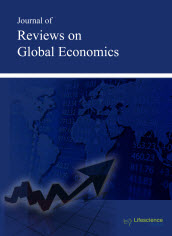jrge
Abstract - Contract Workers in Japan’s Nuclear Utility Industry: Can We Maintain Safety and Health Standards at Nuclear Power Plants?
|
|
Abstract: Many small contracting firms are used to maintain nuclear power plants in Japan. The accident at the Fukushima nuclear plant raised the serious question as to whether safety standards can be upheld with this system. A review of regulations governing Japan’s nuclear utility industry derived two imperfect information models that implied opposing incentives for utility companies to use contract workers rather than hire employees. We then analyzed the dataset of nuclear plant worker’s exposure to radiation in the power generation industry. The results suggest that using contract workers enables the utility companies to implement lower standards than those imposed by regulations and to reduce costs by circumventing responsibilities legally imposed on employers. Keywords: Nuclear power plant, Risk management, Contract worker, Safety and health education.Download Full Article |
Abstract - Social Choice as a Continuous Mapping from IRn→IR : A Group Invariance Approach
|
|
Abstract: Social choice is studied by employing a group invariance approach in a way that appears not to have been previously been exploited. This simplifies the problem and the proofs and provides some new insights into the foundations of impossibility results. Keywords: Aggregating preferences, welfare function, group actions.Download Full Article |
Abstract - Trade Openness-Government Size Nexus: Compensation Hypothesis Considered for Nigeria
|
|
Abstract: Over the years, substantial theoretical and empirical studies have been carried out on the trade openness-government size nexus. While a strand of the literature reported positive linkage, the other suggests otherwise. This study contributes to the debate by examining this relationship for Nigeria using the bounds testing approach to cointegration within an ARDL framework proposed by Pesaran et al. (2001). Empirical evidence reveals that government size measured by percentage share of total government expenditure in GDP and share (percent) of recurrent expenditure in GDP significantly affects trade openness in the long run but percentage share of capital expenditure in GDP as a measure of government size does not impact on trade openness in the long run. The results of the standard causality test corroborate these findings. However, the three measures of government size considered significantly affect trade openness in the short run. The major implication for our study therefore is that compensation hypothesis holds for Nigeria. Thus, the government need to continue to expand its expenditure in order to cushion the effect of increase in risk caused by rising trade openness. Keywords: Compensation Hypothesis, trade openness, government size, Bound Test, Nigeria.Download Full Article |
Abstract - Modeling an Alternative Expression of Covered Interest Parity – in Inflation Targeting Economies of Emerging Asia
|
|
Abstract: We establish an alternative form of expressing the covered interest parity model that incorporates the onshore and offshore foreign exchange forward market of inflation targeting economies of Emerging Asia, which provides the ability to identify if there is the occurrence of covered interest parity in foreign exchange forward markets. Keywords: Capital Mobility Covered Interest Parity Model, Arbitragers, Speculators, Onshore and Offshore Foreign Exchange Forward Market, Arbitrage Profit and Loss, Emerging Asia.Download Full Article |























